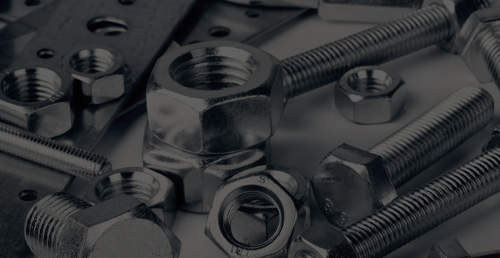self threading bolts for steel
Understanding Self-Threading Bolts for Steel Applications
In the realm of construction and manufacturing, the choice of fasteners plays a crucial role in the integrity and longevity of structures. Among the various types available, self-threading bolts have gained prominence, especially in applications involving steel. This article delves into the characteristics, advantages, and applications of self-threading bolts, along with considerations for their use in steel.
What Are Self-Threading Bolts?
Self-threading bolts, also known as self-tapping bolts or screws, are specifically designed to create their own threads within a material, typically metallic substrates like steel. Unlike standard bolts, which require pre-drilled holes and nuts for proper fastening, self-threading bolts can produce their own thread patterns as they are driven into the material. This unique feature makes them particularly advantageous in scenarios where speed and efficiency are paramount.
Characteristics of Self-Threading Bolts
Self-threading bolts have a distinctive design that enables them to cut threads as they penetrate the material. Key characteristics include
1. Thread Design The threads of self-threading bolts often have a spiral shape that facilitates easier penetration and reduces the amount of force needed to drive them into the steel. 2. Material Composition Typically made from high-strength steel or alloy materials, these bolts are often treated with coatings to resist corrosion and enhance durability, which is vital in steel applications where environmental factors can lead to rust and degradation.
3. Point Geometry The tip of self-threading bolts often features a pointed end, allowing for initial penetration without the need for pre-drilling. Some designs may have additional features, such as flutes or cutting edges, to improve performance.
Advantages of Self-Threading Bolts
The use of self-threading bolts in steel applications offers numerous advantages
1. Time Efficiency By eliminating the need for pre-drilling, self-threading bolts significantly reduce installation time, allowing projects to progress more swiftly.
2. Cost-Effectiveness The reduced labor and tool costs associated with their installation can lead to overall savings, making self-threading bolts an attractive option for budget-conscious projects.
4. Versatility These fasteners are versatile and can be used in various applications, from automotive assemblies to construction projects, ranging from light-duty to heavy-duty requirements.
self threading bolts for steel

5. Reduced Risk of Damage Since self-threading bolts create their own threads, the risk of damaging the surrounding material during installation is minimized, contributing to the longevity of both the fastener and the steel structure.
Applications in Steel Construction
Self-threading bolts are widely utilized in various steel applications, including
- Structural Steel Fabrication Ideal for joining steel components in structural frameworks, bridges, and buildings, where the strength of the connection is crucial. - Automotive Industry Commonly found in vehicle manufacturing, self-threading bolts help attach body panels, frame components, and engine parts securely.
- Heavy Machinery Assembly In machinery construction, these bolts provide the necessary strength required to withstand vibrations and heavy loads.
- Electrical and HVAC Installations Used for mounting and securing components in electrical panels and HVAC systems, where ease of installation and reliability are essential.
Considerations for Use
While self-threading bolts offer many advantages, there are factors to consider when using them in steel applications
1. Material Thickness For optimal performance, ensure that the thickness of the steel is suitable for the specific self-threading bolt being used. Thicker materials may require longer bolts.
2. Bolt Size and Thread Pitch Select the correct size and thread pitch to match the specific application needs, ensuring adequate load-bearing capacity.
3. Installation Techniques Proper installation techniques are essential for achieving the desired level of engagement and strength. Following the manufacturer's guidelines is critical.
4. Environmental Conditions Consider environmental factors, such as exposure to moisture or chemicals, and select bolts with appropriate finishes to prevent corrosion.
In summary, self-threading bolts are an invaluable addition to the toolkit of engineers and builders working with steel. Their unique properties facilitate efficient assembly and provide strong, reliable connections needed in various applications. Understanding their characteristics, benefits, and appropriate uses can greatly enhance the effectiveness and efficiency of construction projects.
-
Weatherproof Plastic Expansion Anchors for OutdoorTala FouJun.06,2025
-
Sustainability in the Supply Chain: Eco-Friendly TEK Screws ProductionTala FouJun.06,2025
-
Load-Bearing Capacity of External Insulation FixingsTala FouJun.06,2025
-
Double Head Bolts: Enhancing Efficiency in Industrial MachineryTala FouJun.06,2025
-
Corrosion Resistance in Chipboard Screws: Coatings for Wholesale DurabilityTala FouJun.06,2025
-
Butterfly Toggle Bolts : Enhancing Structural ResilienceTala FouJun.06,2025
